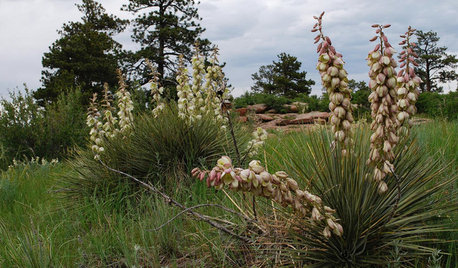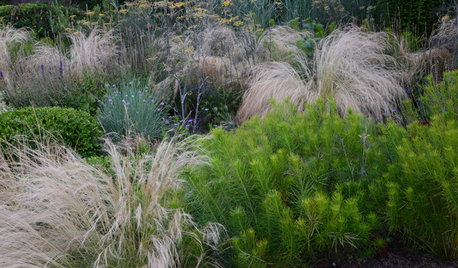Ugh! Gnats/fruit flies/fingus gnats all over my plants and soil.
nephifofum
11 years ago
Featured Answer
Sort by:Oldest
Comments (43)
birdsnblooms
11 years agoTiffany, purpleinopp Z8b Opp, AL
11 years agoRelated Professionals
Holly Springs Landscape Architects & Landscape Designers · Anderson Landscape Contractors · Pelham Landscape Contractors · Bainbridge Island Landscape Contractors · Conroe Landscape Contractors · Holland Landscape Contractors · Kettering Landscape Contractors · North Ridgeville Landscape Contractors · Palos Verdes Estates Landscape Contractors · Pleasant Prairie Landscape Contractors · Riverhead Landscape Contractors · University City Landscape Contractors · White Bear Lake Landscape Contractors · Suisun City Interior Designers & Decorators · Wolf Trap Handymanrhizo_1 (North AL) zone 7
11 years agoPolly381
11 years agonephifofum
11 years agotifflj
11 years agotapla (mid-Michigan, USDA z5b-6a)
11 years agobirdsnblooms
11 years agotapla (mid-Michigan, USDA z5b-6a)
11 years agorhizo_1 (North AL) zone 7
11 years agomaureenlavallie4
8 years agolmontestella
8 years agorina_Ontario,Canada 5a
8 years agolast modified: 8 years agoemisanwald
8 years agoMentha (East TN, Zone 6B-7A)
8 years agoAlex Bean
8 years agolast modified: 8 years agojamilalshaw26
8 years agorina_Ontario,Canada 5a
8 years agojamilalshaw26
8 years agoDanielle Rose
8 years agomaureenlavallie4
8 years agotapla (mid-Michigan, USDA z5b-6a)
8 years agoUser
7 years agotapla (mid-Michigan, USDA z5b-6a)
7 years agothenaturalist
7 years agolast modified: 7 years agojamilalshaw26
7 years agotapla (mid-Michigan, USDA z5b-6a)
7 years agothenaturalist
7 years agothenaturalist
7 years agotapla (mid-Michigan, USDA z5b-6a)
7 years agotapla (mid-Michigan, USDA z5b-6a)
7 years agoCathleen Homer
7 years agoamber
7 years agotapla (mid-Michigan, USDA z5b-6a)
7 years agostewartsjon
7 years agoSarah Wyatt
7 years agolast modified: 7 years agocaityross
7 years agoPaul MI
7 years agotapla (mid-Michigan, USDA z5b-6a)
7 years agoPaul MI
7 years agolast modified: 7 years agoAlyssa (Zone 6)
7 years agotapla (mid-Michigan, USDA z5b-6a)
7 years ago
Related Stories

MOST POPULARHow to Get Rid of Those Pesky Summer Fruit Flies
Learn what fruit flies are, how to prevent them and how to get rid of them in your home
Full Story
GARDENING GUIDESGarden Myths to Debunk as You Dig This Fall and Rest Over Winter
Termites hate wood mulch, don’t amend soil for trees, avoid gravel in planters — and more nuggets of garden wisdom
Full Story
HOUSEPLANTS8 Essentials for Healthy Indoor Plants
Houseplants add so much to our homes — and can thrive when grown in the right conditions. Keep these tips in mind
Full Story
GARDENING GUIDESCommon Myths That May Be Hurting Your Garden
Discover the truth about fertilizer, soil, staking and more to keep your plants healthy and happy
Full Story
GARDENING GUIDESGreat Design Plant: Yucca Glauca
Soapweed yucca's pale green leaves brighten the winter garden and add sculptural interest year-round
Full Story
GARDENING GUIDESMake Sure You Read This Before Buying New Plants
Follow these 10 plant-selection tips to avoid buyer’s remorse
Full Story
FALL AND THANKSGIVINGFall Decorating Ideas From a Designer to the Stars
You might think all-out glitz and over-the-top glamour make up Adam Hunter's fall decorations. You'd be wrong
Full Story
EDIBLE GARDENSHow to Grow Your Own Sweet Summer Crops
This guide will help any gardener get started on growing the freshest warm-season veggies and berries for summer
Full Story
HOUSEPLANTSIndoor Winter Gardens for Cheerier Days
Bring plants inside for drab-days mood boosting — not to mention cleaner indoor air and protection for your greenery
Full Story
GARDENING GUIDES4 Ways to Break the Rules in Your Garden
For a more creative landscape design, take a different approach to planting
Full Story









iamhopscotch